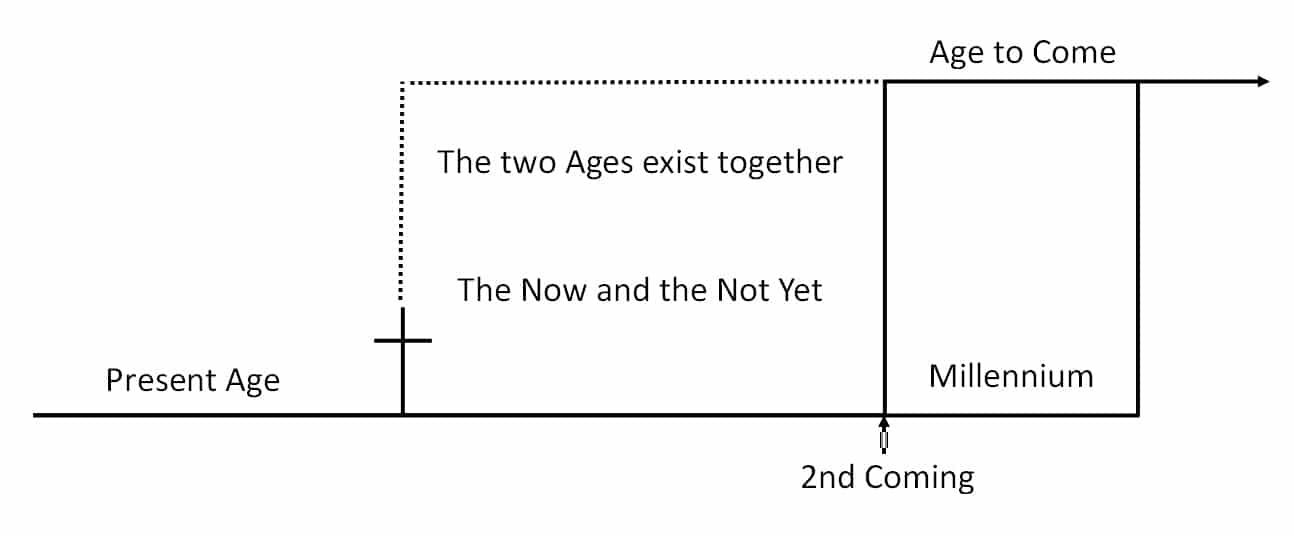Kingdoming Well Part 7
Passover was a feast that was celebrated by the people of Israel every year as a reminder of what took place when they were set free from 430 years of slavery in Egypt. This reminder was in the form of a meal, which had some very important symbols involved. These symbols had two purposes. One of the purposes was to help the people of God remember how He had delivered them from slavery. God used Moses and a series of plagues to convince Pharoah to let His people go. Pharoah was stubborn and it took ten plagues before he finally released Israel. The tenth plague was the death of the firstborn. Israel was protected from this plague by killing a lamb without defect and putting its blood on the doorposts of their homes. Death then passed over the homes covered in the blood of the lamb and they were safe.
The other purpose was to help them know the Messiah when he came to give them the ultimate deliverance from the ultimate slavery. Jesus is the lamb of God who takes away our sin and his blood cleanses our sin and sets us free from the penalty of death.
The symbols in the meal were many, but there are two that we have taken for our communion celebration. Unleavened bread and a cup of wine.
Significance of the bread (His Body)
When Jesus broke the unleavened bread in the Passover meal He said,
Matthew 26:26 (NIV)
26 While they were eating, Jesus took bread, gave thanks and broke it, and gave it to his disciples, saying, “Take and eat; this is my body.”
John 6:35 (NIV)
35 Then Jesus declared, “I am the bread of life. He who comes to me will never go hungry, and he who believes in me will never be thirsty.
There is another part of the Passover tradition that is cool. The matzah tash, holds the bread. It has always had three sections. The bread that is broken is taken out of the middle section. Father, SON, Holy Spirit. A piece of the broken bread is wrapped in a white linen and hidden while the children are out of the room. The children then hunt for the hidden piece of bread called the afikomen. Whoever finds it receives a prize. Jesus is taken down from the cross, and His broken body is wrapped in linen and hidden in a tomb. He defeats death and is resurrected and now whoever finds Him receives a prize, eternal life!
The cups (His blood)
1. The First Cup Sanctification
In this cup God is saying to his people, “I will bring you out.” God will bring us out of bondage, slavery, darkness and death.
2. The Second Cup Plagues
With the cup of plagues, the leader of the Passover service begins to recount the redemption story. This section, known as the “telling,” surveys the whole redemption drama, from the Patriarchs, to Moses, to Pharaoh, and to the plagues and the deliverance from Egypt.
3. The Third Cup Redemption
It is with this cup that Jesus institutes communion. But there is more to the story. In first century Galilea, when it was time for a man and woman to marry, both fathers would negotiate the bride price, recognizing that the bride would be a precious loss to her family.
Taking a cup of wine, the groom drank from it and offered it to the woman, symbolically saying that he wanted to make a covenant and would be willing to give his life for her. The woman sealed the engagement by drinking from the same glass. From that moment, she was referred to as one who was bought with a price, distinguishing her as an engaged woman.
Jesus made this comparison especially clear during the Last Supper. Taking a cup of wine in his hands, he told his disciples,
Luke 22:20 (NIV)
20 In the same way, after the supper he took the cup, saying, “This cup is the new covenant in my blood, which is poured out for you.
No doubt his disciples immediately recognized the imagery of a marriage proposal. And they were able to picture the depths of Jesus love—a love so deep that Jesus made a covenant with them and was willing to give his life for them.
By using marriage imagery, Jesus said, in effect, I love you as my bride, so I’ll pay the bride price. I’ll give up my life for you and to go my Father’s house to prepare a place for you. And one day I will return and take you to be with me forever.
John 14:1-3 (NIV)
1 “Do not let your hearts be troubled. Trust in God; trust also in me. 2 In my Father’s house are many rooms; if it were not so, I would have told you. I am going there to prepare a place for you. 3 And if I go and prepare a place for you, I will come back and take you to be with me that you also may be where I am.
Writing to the Corinthians, Paul used the bridegroom picture as well
1 Corinthians 6:19-20 (NIV)
19 Do you not know that your body is a temple of the Holy Spirit, who is in you, whom you have received from God? You are not your own; 20 you were bought at a price. Therefore honor God with your body.
You are not your own; you were bought at a price. His words reminded Jesus believers that they were his brides-to-be, waiting for the day when he would return and take them home. Not knowing when the groom would come, wise brides made preparations immediately so they would not be caught unprepared.
In Jesus time, families usually lived in clusters of buildings called insulas. These clusters were built around a central courtyard. Grandparents, cousins, uncles, and aunts all lived and interacted together in the insula.
As sons married, they added to the insula. After asking a girl to marry him, the son would return to his village and build new rooms onto his father’s home. The son, anxious to be married, waited for the day when his father declared that the building was complete. Then he could finally marry his bride and bring her to their new home.
When Jesus described his second coming, he again used the picture of a young bridegroom, waiting for his father’s approval to return for his bride:
Matthew 24:36 (NIV)
36 “No one knows about that day or hour, not even the angels in heaven, nor the Son, but only the Father.
not even one (man, woman or thing), i.e. none, nobody, nothing :- any (man), aught, man, neither any (thing), never (man), no (man), none (+ of these things), not (any, at all, -thing), nought. Strong’s Talking Greek & Hebrew Dictionary.
It usually took about a year for the bridegroom to return. Part of the tradition was that the groom would return and try and surprise his bride. He would often come in at night, it was part of the romance. The bride and her attendants would need to be ready to go at a moment’s notice. One of the groomsmen returning with the groom would give a warning shout so the bride had a couple of minutes and then the bridegroom would blow a shofar and then he would swoop up his wife and head off for the wedding festival with the bridal attendants and groomsmen who were ready in tow.
1 Thessalonians 4:16-17 (NIV)
16 For the Lord himself will come down from heaven, with a loud command, with the voice of the archangel and with the trumpet call of God, and the dead in Christ will rise first. 17 After that, we who are still alive and are left will be caught up together with them in the clouds to meet the Lord in the air. And so we will be with the Lord forever.
4. The Fourth Cup Wedding feast
Matthew 26:29 (NIV)
29 I tell you, I will not drink of this fruit of the vine from now on until that day when I drink it anew with you in my Father’s kingdom.”
We drink this one with him at the wedding supper of the Lamb
Revelation 19:7-9 (NIV)
7 Let us rejoice and be glad and give him glory! For the wedding of the Lamb has come, and his bride has made herself ready. 8 Fine linen, bright and clean, was given her to wear.” (Fine linen stands for the righteous acts of the saints.) 9 Then the angel said to me, “Write: ‘Blessed are those who are invited to the wedding supper of the Lamb!’” And he added, “These are the true words of God.”
Jesus is the bridegroom, we are the bride, waiting for His return. We are to be waiting wisely.
Matthew 25:1-13 (NIV)
1 “At that time the kingdom of heaven will be like ten virgins who took their lamps and went out to meet the bridegroom. 2 Five of them were foolish and five were wise. 3 The foolish ones took their lamps but did not take any oil with them. 4 The wise, however, took oil in jars along with their lamps. 5 The bridegroom was a long time in coming, and they all became drowsy and fell asleep. 6 “At midnight the cry rang out: ‘Here’s the bridegroom! Come out to meet him!’ 7 “Then all the virgins woke up and trimmed their lamps. 8 The foolish ones said to the wise, ‘Give us some of your oil; our lamps are going out.’ 9 “‘No,’ they replied, ‘there may not be enough for both us and you. Instead, go to those who sell oil and buy some for yourselves.’ 10 “But while they were on their way to buy the oil, the bridegroom arrived. The virgins who were ready went in with him to the wedding banquet. And the door was shut. 11 “Later the others also came. ‘Sir! Sir!’ they said. ‘Open the door for us!’ 12 “But he replied, ‘I tell you the truth, I don’t know you.’ 13 “Therefore keep watch, because you do not know the day or the hour.
When the Lord comes for us we are to have oil lamps ready and waiting. Oil in the Bible is a symbol of the Holy Spirit. The message of the parable is clear. The Lord is coming for his bride, believers who have been filled with the Holy Spirit and are awaiting His return. While we wait, we need to stay filled and focused, living faithfully for Him, knowing that He is coming soon, and yet making the most of the time for His glory until He returns for us. Honoring Him by doing that which He commanded us to do.
Matthew 28:17-20 (NIV)
17 When they saw him, they worshiped him; but some doubted. 18 Then Jesus came to them and said, “All authority in heaven and on earth has been given to me. 19 Therefore go and make disciples of all nations, baptizing them in the name of the Father and of the Son and of the Holy Spirit, 20 and teaching them to obey everything I have commanded you. And surely I am with you always, to the very end of the age.”
We are waiting for the return of our bridegroom. Living in tension, Between the now and the not yet. Between the fourth and fifth feast. Between the third and fourth cup.


